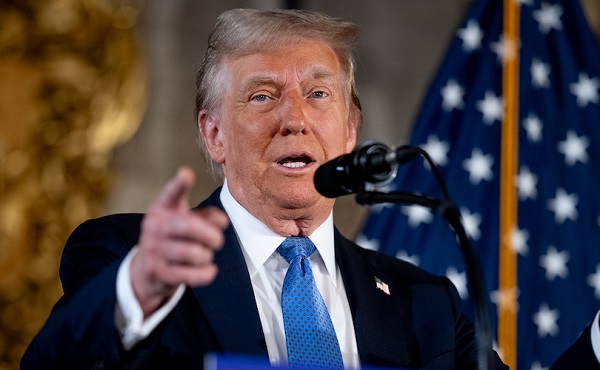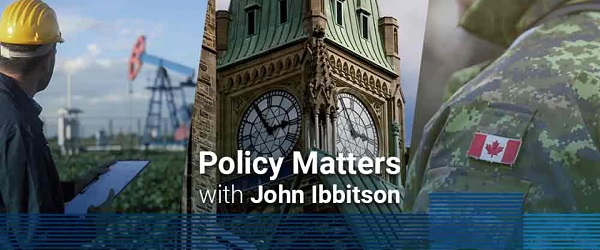Alberta
With a boost of up to $200 million from the Province, Inter Pipeline Ltd. investing $600 million in new petrochemical plant east of Edmonton

Premier Notley announces private investment in a new petrochemical upgrading facility alongside David Chappell (r), Patrick Bergen and Pyramid Prefab Piping staff.
From the Province of Alberta
Made-in-Alberta plan attracts new jobs, investment
Alberta is taking a significant step forward on a more diversified economy with a project that supports hundreds of jobs and adds more value to our energy resources.
If the plan is finalized, Inter Pipeline Ltd. would invest about $600 million in a new petrochemical upgrading facility that would produce more valuable consumer products derived from propane, including acrylic acid that is used in many everyday consumer products. This major private investment is unlocked by support from Premier Rachel Notley’s Made-in-Alberta energy diversification strategy.
The project would build on the company’s supply and knowledge of propylene, a product it already produces at the company’s other petrochemical facilities east of Edmonton. Construction would create about 600 jobs with another 50 long-term positions supporting the local economy once the facility is fully up and running.
“For decades, Albertans settled for less while new jobs and investment went south of the border. So we’re grabbing the bull by the horns, fighting for a Made-in-Alberta plan that represents the single largest energy diversification effort since the days of Peter Lougheed. We’re proud to support upgrading projects like Inter Pipeline’s because they mean more good jobs and top dollar for the energy resources that belong to all Albertans.”
Inter Pipeline’s supply of propylene, a gas that results from adding value to raw propane, creates the opportunity to further leverage Alberta’s natural resource strengths and extend the value chain. By producing acrylic acid used in things like adhesives, floor polishes and paints, this project increases the likelihood of attracting investments in more manufacturing facilities in the future.
“Alberta’s abundance of natural resources has positioned Inter Pipeline to invest in opportunities like this that build on our strengths to extend the value chain and make products that are in demand around the world. We want to commend this government for fostering the environment for companies like ours to grow and create jobs, while competitively positioning our business in the world market.”
The announcement was made at Pyramid Prefab Piping, one of the hundreds of companies across the province benefiting from the Made-in-Alberta strategy. As a manufacturer that employs about 45 people in Calgary, Pyramid was contracted to build key components for Inter Pipeline’s project already under construction.
“We’re pleased to see the government’s vision for the future is focused on jobs and diversification, which will lead to more work for companies like ours to build the components needed for energy upgrading projects. This growth means we can put even more skilled tradespeople to work in the Calgary region and contribute even more to the oil and gas sector.”
If finalized by Inter Pipeline, the private investment would be unlocked by provincial support of up to $70 million in future royalty credits under the Petrochemicals Diversification Program, which was first developed in early 2016.
Quick facts
- Inter Pipeline’s acrylic acid and propylene derivatives facility would be in Alberta’s Industrial Heartland, northeast of Edmonton. Construction is expected to begin in 2021.
- The facility would convert 60,000 tonnes per year of propylene and produce 80,000 tonnes per year of propylene derivatives, including acrylic acid, when operational.
- Acrylic acid is a value-added product used to make coatings, adhesives, diapers, floor polishes and paints.
- Roughly 50 skilled, local permanent jobs and 600 skilled trade construction jobs would be created.
- Inter Pipeline has already been approved to receive up to $200 million in future royalty credits from the first round of the Petrochemicals Diversification Program for the construction its $3.5-billion Heartland Petrochemical Complex.
Background
Made-in-Alberta energy strategy
- Premier Notley’s government is investing $3 billion to support energy diversification that creates jobs and adds value to our resources here at home.
- The focus is on two key areas: partial upgrading of our bitumen and petrochemical processing that adds value to natural gas and natural gas liquids.
- Overall, this commitment is expected to attract more than $25 billion in private-sector investment to Alberta and create more than 20,000 jobs.
Petrochemical upgrading
- Support for the Inter Pipeline facility is provided under the petrochemical portion of the Made-in-Alberta strategy.
- Two projects – owned by the Canada-Kuwait Petrochemical Corporation and Inter Pipeline Ltd. – were selected under the first round of this program, which was announced in 2016. The projects combined for $8 billion in private investment, creating more than 5,000 jobs.
- The government announced a second round of support for petrochemical upgrading in 2018.
- Nauticol’s methanol facility was previously selected under the second round of this program. The entire project is a $2-billion private investment in a plant near Grande Prairie, creating roughly 3,000 direct and indirect jobs.
- Albertans and Canadians use dozens of products every day that are based in part on petrochemicals like those from Alberta’s growing value-added industry including:
- polyester fabric couches, HD televisions, phones coffeemakers and computers
- car tires, engine hoses, gas, oil, radio components and seats
- desks, chairs, computers, carpets, cellphones and other office supplies
Partial upgrading of bitumen
- $1 billion in grants and loan guarantees to encourage companies to invest in new or expanded bitumen-upgrading facilities.
- Partial upgrading reduces the thickness of oil sands bitumen so it can flow through pipelines more easily, without having to be blended with diluent or as much diluent, a thinning agent. Benefits include:
- increased prices for our resources before shipping
- up to 30 per cent more capacity on existing pipelines
- more world refineries capable of processing our product
- cost savings on diluent for industry
- fewer emissions by removing high carbon content
Energy diversification timeline
- January 2016 – Royalty Review Advisory Panel recommended more value-add within the province, including partial upgrading
- February 2016 – Petrochemicals Diversification Program (PDP) introduced
- October 2016 – Energy Diversification Advisory Committee (EDAC) formed
- December 2016 – First PDP projects awarded
- December 2017 – Inter Pipeline finalized investment in petrochemical project
- February 2018 – EDAC reported back, including recommendation of partial upgrading, more PDP and additional support for petrochemical feedstock infrastructure
- March 2018 – Government launched programs through the Energy Diversification Act
- Fall 2018 – oil price differential hit crisis point. In response, government took several actions:
- Temporary limit on oil production
- Doubled support for PDP
- Began crude-by-rail negotiations
- Appointed LNG Investment Team
- Request for industry interest in building refining capacity
- January 2019 – Government announced letter of intent for first partial upgrading project awarded (Value Creation Inc.)
- February 2019 – Canada-Kuwait Petrochemical Corporation finalized investment in petrochemical project
- February 2019 – Premier announced crude-by-rail agreements
- February 2019 – Nauticol awarded first project under second round of PDP
Alberta
Cross-Canada NGL corridor will stretch from B.C. to Ontario

Keyera Corp.’s natural gas liquids facilities in Fort Saskatchewan. Photo courtesy Keyera Corp.
From the Canadian Energy Centre
By Will Gibson
Keyera ‘Canadianizes’ natural gas liquids with $5.15 billion acquisition
Sarnia, Ont., which sits on the southern tip of Lake Huron and peers across the St. Clair River to Michigan, is a crucial energy hub for much of the eastern half of Canada and parts of the United States.
With more than 60 industrial facilities including refineries and chemical plants that produce everything from petroleum, resins, synthetic rubber, plastics, lubricants, paint, cosmetics and food additives in the southwestern Ontario city, Mayor Mike Bradley admits the ongoing dialogue about tariffs with Canada’s southern neighbour hits close to home.
So Bradley welcomed the announcement that Calgary-based Keyera Corp. will acquire the majority of Plains American Pipelines LLP’s Canadian natural gas liquids (NGL) business, creating a cross-Canada NGL corridor that includes a storage hub in Sarnia.
“As a border city, we’ve been on the frontline of the tariff wars, so we support anything that helps enhance Canadian sovereignty and jobs,” says the long-time mayor, who was first elected in 1988.
The assets in Sarnia are a key piece of the $5.15 billion transaction, which will connect natural gas liquids from the growing Montney and Duvernay plays in B.C. and Alberta to markets in central Canada and the eastern U.S. seaboard.
NGLs are hydrocarbons found within natural gas streams including ethane, propane and pentanes. They are important energy sources and used to produce a wide range of everyday items, from plastics and clothing to fuels.
Keyera CEO Dean Setoguchi cast the proposed acquisition as an act of repatriation.
“This transaction brings key NGL infrastructure under Canadian ownership, enhancing domestic energy capabilities and reinforcing Canada’s economic resilience by keeping value and decision-making closer to home,” Setoguchi told analysts in a June 17 call.
“Plains’ portfolio forms a fully integrated cross Canada NGL system connecting Western Canada supply to key demand centres across the Prairie provinces, Ontario and eastern U.S.,” he said.
“The system includes strategic hubs like Empress, Fort Saskatchewan and Sarnia – which provide a reliable source of Canadian NGL supply to extensive fractionation, storage, pipeline and logistics infrastructure.”
Martin King, RBN Energy’s managing director of North America Energy Market Analysis, sees Keyera’s ability to “Canadianize” its NGL infrastructure as improving the company’s growth prospects.
“It allows them to tap into the Duvernay and Montney, which are the fastest growing NGL plays in North America and gives them some key assets throughout the country,” said the Calgary-based analyst.
“The crown assets are probably the straddle plants in Empress, which help strip out the butane, ethane and other liquids for condensate. It also positions them well to serve the eastern half of the country.”
And that’s something welcomed in Sarnia.
“Having a Canadian source for natural gas would be our preference so we see Keyera’s acquisition as strengthening our region as an energy hub,” Bradley said.
“We are optimistic this will be good for our region in the long run.”
The acquisition is expected to close in the first quarter of 2026, pending regulatory approvals.
Meanwhile, the governments of Ontario and Alberta are joining forces to strengthen the economies of both regions, and the country, by advancing major infrastructure projects including pipelines, ports and rail.
A joint feasibility study is expected this year on how to move major private sector-led investments forward.
Alberta
Alberta school boards required to meet new standards for school library materials with regard to sexual content

Alberta’s government has introduced new standards to ensure school library materials are age-appropriate.
School libraries should be safe and supportive places where students can learn and explore without being exposed to inappropriate sexual content. However, in the absence of a consistent standard for selecting age-appropriate library materials, school boards have taken different approaches, leading to concerns about safeguards in place.
In response to these concerns, and informed by feedback from education partners and the public, Alberta’s government has created standards to provide school boards with clear direction on the selection, availability and access to school library materials, such as books.
“Our actions to ensure that materials in school libraries don’t expose children to sexual content were never about banning books. These new standards are to ensure that school boards have clear guidance to ensure age-appropriate access to school library materials, while reflecting the values and priorities of Albertans.”
The new standards set clear expectations for school library materials with regard to sexual content and require school boards to implement policies to support these standards.
Standards for school library materials
Under the new standards, school libraries are not permitted to include library materials containing explicit sexual content. Non-explicit sexual content may be accessible to students in Grade 10 and above, provided it is age-appropriate.
“Protecting kids from explicit content is common sense. LGBTQ youth, like all children, deserve to see themselves in stories that are age-appropriate, supportive and affirming – not in material that sexualizes or confuses them.”
School boards must also regularly review their school library collections, publish a full list of available materials and ensure that a staff member supervises students’ access to school library materials. School boards will have to remove any materials with explicit sexual content from their school libraries by October 1.
School board policies and procedures
All school boards must have publicly available policies that align with the new standards for selecting and managing library materials by January 1, 2026. School boards can either create new policies or update existing ones to meet these requirements.
These policies must outline how school library materials are selected and reviewed, how staff supervise students’ access throughout the school day, and how a student, parent, school board employee or other member of the school community can request a review or removal of materials in the school library. School boards are also required to clearly communicate these policies to employees, students and parents before January 2026.
“A robust, grade- and age-appropriate library catalogue is vital for student success. We welcome the ministry’s initiative to establish consistent standards and appreciate the ongoing consultation to help craft a plan that will serve our families and communities well.”
“Red Deer Public Schools welcomes the new provincial standards for school library materials. Our division is committed to maintaining welcoming, respectful learning spaces where students can grow and thrive. Under the new standards for school libraries, we remain dedicated to providing learning resources that reflect our values and support student success.”
Quick facts
- The new standards will apply to public, separate, francophone, charter and independent schools.
- The ministerial order does not apply to municipal libraries located within schools or materials selected for use by teachers as learning and teaching resources.
- From May 26 to June 6, almost 80,000 people completed an online survey to provide feedback on the creation of consistent standards to ensure the age-appropriateness of materials available to students in school libraries.
Related information
- Ministerial Order
- School library standards engagement
- Reference Materials: Content warning: this document contains graphic content that may be disturbing to viewers and is not appropriate for young viewers. Viewer discretion is advised.
-

 Addictions2 days ago
Addictions2 days agoMore young men want to restrict pornography: survey
-

 International2 days ago
International2 days agoSupport for the Ukraine war continues because no one elected is actually in charge.
-

 Business2 days ago
Business2 days agoTrump slaps Brazil with tariffs over social media censorship
-

 National2 days ago
National2 days agoHow Long Will Mark Carney’s Post-Election Honeymoon Last? – Michelle Rempel Garner
-

 espionage1 day ago
espionage1 day agoFBI’s Dan Bongino may resign after dispute about Epstein files with Pam Bondi
-

 Business2 days ago
Business2 days agoCBC six-figure salaries soar
-

 Addictions2 days ago
Addictions2 days agoCan addiction be predicted—and prevented?
-

 Brownstone Institute2 days ago
Brownstone Institute2 days agoNet Zero: The Mystery of the Falling Fertility







